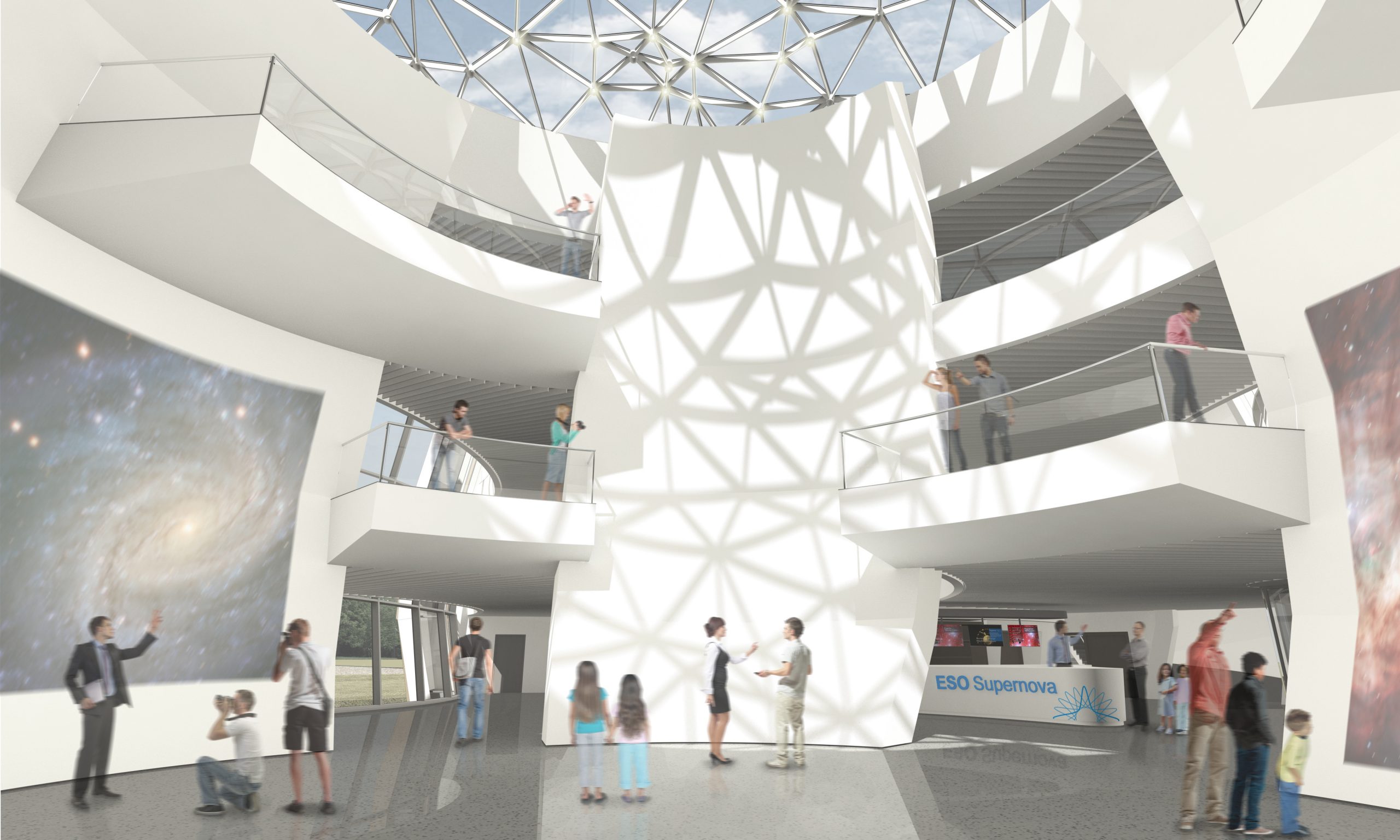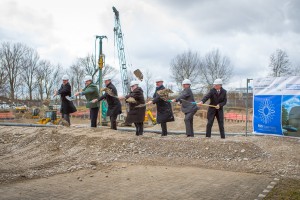Groundbreaking Ceremony for ESO Supernova Planetarium & Visitor Centre

A groundbreaking ceremony for the ESO Supernova Planetarium & Visitor Centre took place on February 24 at ESO’s Headquarters in Garching, Germany. This event marked the beginning of the main construction phase of the facility.
The ESO Supernova will be a magnificent showcase for astronomy for the public. It is made possible by a collaboration between the Heidelberg Institute for Theoretical Studies (HITS) and ESO. The Klaus Tschira Stiftung (KTS), a German foundation that supports the natural sciences, mathematics and computer science, offered to fully fund the construction and ESO will run the facility. The striking building was designed by the architects Bernhardt + Partner.
This new facility will provide visitors with an immersive experience of astronomy and ESO’s scientific results, projects and technological breakthroughs. It will include a fulldome planetarium and more than 2000 square metres of permanent and temporary exhibitions. Further rooms housing conference facilities will also host a variety of lectures, workshops and conferences. All content will be provided in both English and German.
The groundbreaking event was opened by ESO’s Director General, Tim de Zeeuw. It was attended by representatives of HITS and KTS, invited representatives from the local authorities, members of the Garching Science Campus, a representative of the Technische Universität München, key people involved in the ESO Supernova project and members of the press. Speeches were given by the Klaus Tschira, Founder and Managing Director of the Klaus Tschira Stiftung, the Mayor of Garching, Dietmar Gruchmann and the architect Manfred Bernhardt.
After the speeches, a short groundbreaking ceremony was held at the construction site of the building itself. The ESO Supernova will be finished in early 2017 and is scheduled to open to the public in the course of 2017.
The website for the new facility was also launched at the same time as the groundbreaking ceremony. It allows prospective visitors, journalists, teachers, partners and other planetariums to explore the planned activities of the ESO Supernova, including exhibition themes, educational activities, planetarium shows and guided tours. The web page also lists the opportunities available to become part of the ESO Supernova team either as a volunteer, intern or member of staff. For companies, institutes or individual donors who wish to support the ESO Supernova several types of partnership with corresponding levels of benefits are offered.
ESO
ESO is the foremost intergovernmental astronomy organisation in Europe and the world’s most productive ground-based astronomical observatory by far. It is supported by 16 countries: Austria, Belgium, Brazil, the Czech Republic, Denmark, France, Finland, Germany, Italy, the Netherlands, Poland, Portugal, Spain, Sweden, Switzerland and the United Kingdom, along with the host state of Chile. ESO carries out an ambitious programme focused on the design, construction and operation of powerful ground-based observing facilities enabling astronomers to make important scientific discoveries. ESO also plays a leading role in promoting and organising cooperation in astronomical research. ESO operates three unique world-class observing sites in Chile: La Silla, Paranal and Chajnantor. At Paranal, ESO operates the Very Large Telescope, the world’s most advanced visible-light astronomical observatory and two survey telescopes. VISTA works in the infrared and is the world’s largest survey telescope and the VLT Survey Telescope is the largest telescope designed to exclusively survey the skies in visible light. ESO is a major partner in ALMA, the largest astronomical project in existence. And on Cerro Armazones, close to Paranal, ESO is building the 39-metre European Extremely Large Telescope, the E-ELT, which will become “the world’s biggest eye on the sky”.
Klaus Tschira Stiftung
The Klaus Tschira Stiftung promotes the advancement of the natural sciences, mathematics, and computer science, and wants to raise appreciation for these fields. The Foundation’s commitment begins in the kindergarten and is pursued in schools, universities, and research facilities.
Contact:
Lars Lindberg Christensen
Head of ESO ePOD
Garching bei München, Germany
Tel: +49 89 3200 6761
Cell: +49 173 3872 621
Email: lars@eso.org
About HITS
HITS, the Heidelberg Institute for Theoretical Studies, was established in 2010 by physicist and SAP co-founder Klaus Tschira (1940-2015) and the Klaus Tschira Foundation as a private, non-profit research institute. HITS conducts basic research in the natural, mathematical, and computer sciences. Major research directions include complex simulations across scales, making sense of data, and enabling science via computational research. Application areas range from molecular biology to astrophysics. An essential characteristic of the Institute is interdisciplinarity, implemented in numerous cross-group and cross-disciplinary projects. The base funding of HITS is provided by the Klaus Tschira Foundation.
